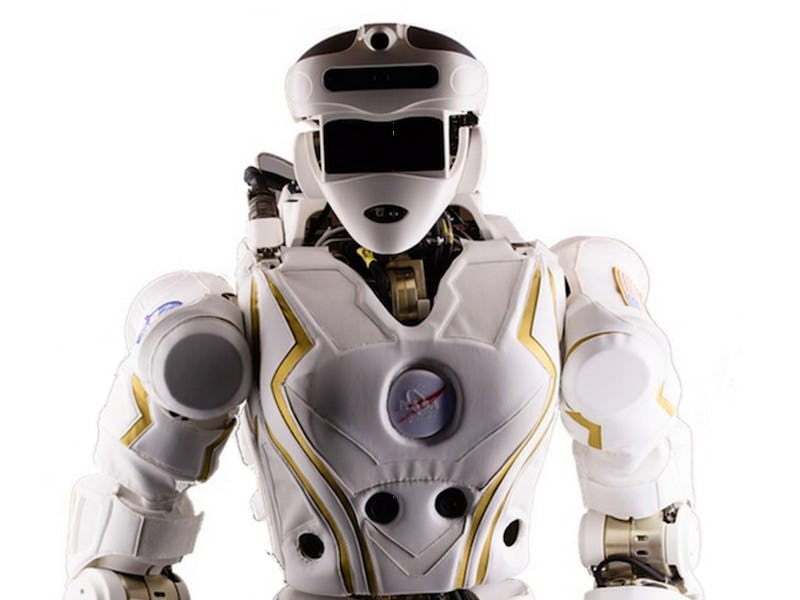NASA Gives MIT a Pair of Humanoid Robots Designed for Space Exploration
Yes, this could be part of a plan to get a robot colony on Mars before sending humans

NASA is sending prototypes of two six-foot-tall, 290-pound humanoid robots to a pair of research groups at MIT for them to tinker around with (read: conduct advanced development and testing). The gift is pretty cool on its face, but considerably more interesting in context. Back in October, NASA administrator Charles Bolden made it clear that the administration expects robots to play a very prominent role in helping us get humans to the red planet. He even predicted that a crew of robots would spend years helping to build a permanent Martian outpost before astronauts hit the ground.
Getting the expertise of MIT’s roboticists might just be a small step towards preparing an army of machines to take over a planet.
Both robots are NASA R5 models — also called “Valkyries,” designed to assist astronauts working in extreme space environments — or replace them entirely. R5 was initially created for disaster-relief tasks, but the overall goal is to turn it into a machine that can accomplish deep space exploration in instances where it’s too difficult or risky to send humans.
The R5s are being sent two groups that previously competed in the DARPA Robotics Challenge this past summer, where several teams were tasked with developing a robot that could accomplish a series of tasks related to disaster relief scenarios. NASA itself will be hosting its own robot competition, the Space Robotics Challenge, at which teams compete in both virtual and physical contests using upgraded R5s.
It does make sense that NASA would want to use robots to replace humans for many tasks in space. Robots wouldn’t need oxygen or any of the life-support systems people need; they’re expendable, so we can send them into situations where they might be lost or damaged; they might even be capable of doing things better than humans, like lifting more weight or using advanced instruments to collect better data.
What doesn’t make sense, however, is the robots’ humanoid forms, which frankly kind of suck. Sticking with a human frame seems to be more of a public-relations ploy than a practical measure. A bipedal hunk of metal and wires might look better, but that doesn’t mean it will help build our Martian colony faster. Look no further than DARPA’s summer contest (lovingly renamed the “DERPA Contest” by the internet) if you’re confused by this argument.
But it’s still too early to start accusing NASA of incompetent planning. The agency has a lot in store for the couple of decades necessary to prepare the world for humans on Mars. When astronauts finally get there, some friendly robots are likely to greet them at the landing site.
R5